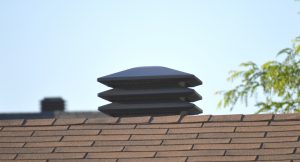Raccoons are a common unwanted guest on residential properties and many foods oriented commercial lots. They are nocturnal and omnivorous willing to eat dead or living animals, fish, nuts, fruit and vegetable and just about anything else. They hunt snakes, mice, rats and even squirrels and will easily break into your food garbage. A common thing for raccoons to do is to find food on one property and then defecate on the adjacent property in an attempt to separate their food from their latrines. This can be a nightmare for anyone living beside a house with food left outside from BBQs, bird nests or just dropped food and pet food all over the place. This will attract all kinds of wildlife and much of it will poop on your lot instead of the one with food. The greatest danger raccoons and general wildlife can cause is an entry into your attic. They will defecate all over the insulation, live in it, nest in it, reproduce in it and urinate in it. They will tear the attic apart to make multiple entryways and will leave the attic at night and return in the early morning before dawn making terrible loud noises like a dog running in your attic. This can mean total remediation of your attic and possibly roof replacement which can cost tens of thousands of dollars so it’s good to know your enemy, preferably better than they do.

There are many companies that will do exclusion, as it is called by professionals and wildlife technicians. It involves sealing off possible entryways, areas on and around the roof that is easy to access. They can use steel mesh to seal soffits and very strong steel cages to protect vents, gables and other entryways wildlife could use to enter your home. Being that this is done on a roof and many people have homes that are two floors or more it may be the smart thing to do to hire a professional roofer or wildlife specialist to do the work. If you are capable and especially if you have roofing experience then you can also go up with your own steel mesh and covers and attach them yourself. Make sure you use strong bolts with very large washers when using steel mesh. Small screws will not hold it tight and staples can be ripped out by a deer mouse.

